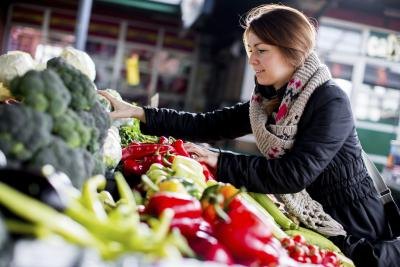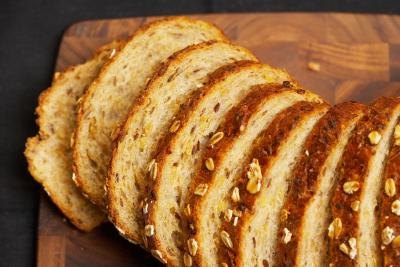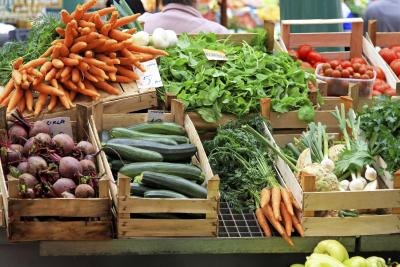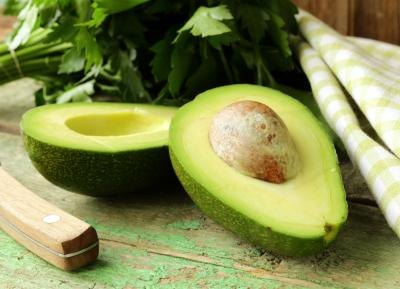Corn ethanol is ethanolroduced from corn that is used as a biomass Corn ethanol is produced by means of ethanol fermentation and distillation.
Corn is the main feedstock used for producing ethanol fuel in the United States.
Corn ethanol is mainly used as an oxygenate in gasoline to produce a low-level blend. To a lesser extent, it is used as fuel for E85 flex-fuel vehicles.
Corn is the main feedstock used for producing ethanol fuel in the United States.
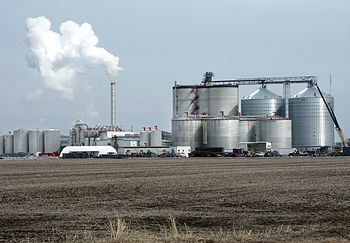
An ethanol fuel plant in West Burlington, Iowa.
Production Procss
There are two main types of corn ethanol production: dry milling and wet milling. The products of each type are utilized in different ways.
In the dry milling process the entire corn kernel is ground into flour and referred to as "meal." The meal is then slurried by adding water. Enzymes are added to the mash that convert starch to dextrose, a simple sugar. Ammonia is added to control the pH and as a nutrient for the yeast, which is added later. The mixture is processed at high-temperatures to reduce the bacteria levels and transferred and cooled in fermenters. This is where the yeast is added and conversion from sugar to ethanol and carbon dioxide begins.
The entire process takes between 40 to 50 hours, during which time the mash is kept cool and agitated in order to facilitate yeast activity. After the process is complete, everything is transferred to distillation columns where the ethanol is removed from the "stillage". The ethanol is dehydrated to about 200 proof using a molecular sieve system and a denaturant such as gasoline is added to render the product undrinkable. With this last addition, the process is complete and the product is ready to ship to gasoline retailers or terminals. The remaining stillage then undergoes a different process to produce a highly nutritious livestock feed. The carbon dioxide released from the process is also utilized to carbonate beverages and to aid in the manufacturing of dry ice.
The process of wet milling takes the corn grain and steeps it in a dilute combination of sulfuric acid and water for 24 to 48 hours in order to separate the grain into many components. The slurry mix then goes through a series of grinders to separate out the corn germ. Corn oil is a by-product of this process and is extracted and sold. The remaining components of fiber, gluten and starch are segregated out using screen, hydroclonic and centrifugal separators.
The gluten protein is dried and filtered to make a corn gluten- meals co-product and is highly sought after by poultry broiler operators as a feed ingredient. The steeping liquor produced is concentrated and dried with the fiber and sold as corn gluten feed to in the livestock industry. The heavy steep water is also sold as a feed ingredient and is used as an environmentally friendly alternative to salt in the winter months. The corn starch and remaining water can then be processed one of three ways: 1) fermented into ethanol, through a similar process as dry milling, 2) dried and sold as modified corn starch, or 3) made into corn syrup.
The production of corn ethanol uses water in two ways – irrigation and processing. There are two types of ethanol processing, wet milling and dry milling, and the central difference between the two processes is how they initially treat the grain. In wet milling, the corn grain is steeped in water, and then separated for processing in the first step. Dry milling, which is more common, requires a different process. According to a report by the National Renewable Energy Laboratory, "Over 80% of U.S. ethanol is produced from corn by the dry grind process.". The dry grind process proceeds as follows:
"Corn grain is milled, then slurried with water to create 'mash.' Enzymes are added to the mash and this mixture is then cooked to hydrolyze the starch into glucose sugars. Yeast ferment these sugars into ethanol and carbon dioxide and the ethanol is purified through a combination of distillation and molecular sieve dehydration to create fuel ethanol. The byproduct of this process is known as distiller's dried grains and solubles (DDGS) and is used wet or dry as animal feed."
Environmental and social issues
Since most U.S. ethanol is produced from corn and the required electricity from many distilleries comes mainly from coal, plants, there has been considerable debate on the sustainability of corn-based bio-ethanol in replacing fossil fuels. Controversy and concerns relate to the large amount of arable land required for crops and its impact on grain supply, direct and indirect land use change effects, as well as issues regarding its energy balance-and carbon intensity considering the full life cycle of ethanol production, and also issues regarding water use and pollution due to the increase expansion of ethanol production.
The initial assumption that biofuels were good for the environment because they had a smaller carbon footprint is in debate over the contention that the production of grain alcohol, and therefore E85, may actually have a greater environmental impact than fossil fuel.
That view says that one must consider:
- The impact of fertilizers and carbon requiring inputs vs carbon offsetting byproducts like distillers grain
- The carbon footprint of the agricultural machinery run to plant, harvest and apply chemicals.
- The environmental impact of those chemicals themselves, including fertilizers and pesticides necessary for efficient mass-production of the grains used.
- The larger amount of energy required to ship and process the grains and turn them into alcohol, versus the more efficient process of converting oil into gasoline or diesel.
- Even resources such as water, needed in huge amounts for grain production, can have serious environmental impact, including ground water depletion, pollution runoff, and algae blooms from waste runoff.
The U.S. Department of Energy has published facts stating that current corn-based ethanol results in a 19% reduction in greenhouse gases, and is better for the environment than other gasoline additives such as MTBE.
Ethanol produced today results in fewer greenhouse gas (GHG) emissions than gasoline and is fully biodegradable, unlike some fuel additives.
- Today, on a life cycle basis, ethanol produced from corn results in about a 20 percent reduction in GHG emissions relative to gasoline. With improved efficiency and use of renewable energy, this reduction could be as much as 52 percent.
- In the future, ethanol produced from cellulose has the potential to cut life cycle GHG emissions by up to 86 percent relative to gasoline.
- Ethanol blended fuels currently in the market – whether E10 or E85 – meet stringent tailpipe emission standards.
- Ethanol readily biodegrades without harm to the environment, and is a safe, high-performance replacement for fuel additives such as MTBE.
Others say that ethanol from corn, as a fuel available now, and cellulosic ethanol in the future, are both much better fuels for the environment. Ethanol derived from sugar-beet as used in Europe or sugar-cane as grown in Brazil in industrial scale is generally seen as having a very positive CO2 balance with up to 80% reduction in well-to-wheel CO2.
A University of Nebraska study in 2009 showed corn ethanol directly emits 51% less greenhouse gas than gasoline. However this study does not take into account the greenhouse gasses involved in production and transportation
Economic Impact of Corn Ethanol
The use of ethanol for fuel has had a damaging impact on food markets, especially in poorer countries. In the United States, ethanol is mostly made from yellow corn, and as the market boomed for alternative fuel, yellow corn went up in price. Many farmers saw the potential to make more money, and switched from white corn to yellow corn. White corn is the main ingredient of tortillas in Mexico, and as the supply dropped, the price doubled, making the base of most Mexican foods unaffordable. Many people, see this as unacceptable, and want no overlap between food crops and fuel crops.mOthers point out that the earth is thought to be able to support double the current human population, and press that the resources available, such as unused farmable land, should be better handled.
The Renewable Fuels Association (RFA), the ethanol industry's lobby group, claims that ethanol production does increase the price of corn by increasing demand. RFA claims that ethanol production has positive economic effect for US farmers, but it does not elaborate on the effect for other populations where field corn is part of the staple diet. An RFA lobby document states that "In a January 2007 statement, the USDA Chief Economist stated that farm program payments were expected to be reduced by some $6 billion due to the higher value of a bushel of corn.
Corn production in 2009 reached over 13.2 billion bushels, and a per acre yield jumped to over 165 bushels per acre.
On March 9, 2011, senator Dianne Feinstein from California introduced a bill that repealed the corn subsidies in the U.S. She is quoted, telling Congress "Ethanol is the only industry that benefits from a triple crown of government intervention: its use is mandated by law, it is protected by tariffs, and companies are paid by the federal government to use it. It's time we end this practice once and for all".
Alternatives to corn as a feedstock
Remnants from food production such as corn stover could be used to produce ethanol instead of food corn. The use of cellulosic biomass to produce ethanol is a new trend in biofuel production. Fuels from these products are considered second generation biofuels and are considered by some to be a solution to the food verses fuel debate. The possibility of using this material has been acknowledged by the scientific community and the political community as well.
References
- ^ "Ethanol Market Penetration". Alternative Fuels and Advanced Vehicles Data Center, US DOE. Retrieved 2006-06-25.
- ^ Goettemoeller, Jeffrey; Adrian Goettemoeller (2007). Sustainable Ethanol: Biofuels, Biorefineries, Cellulosic Biomass, Flex-Fuel Vehicles, and Sustainable Farming for Energy Independence. Prairie Oak Publishing, Maryville, Missouri. p. 42. ISBN 978-0-9786293-0-4.
- ^ Ethanol Production and Distribution, Alternative Fuels Data Center, US Dept of Energy <http://www.afdc.energy.gov/fuels/ethanol_production.html>.
- ^ "Biofuels: The Promise and the Risks, in World Development Report 2008" (PDF). The World Bank. 2008. pp. 70–71. Retrieved 2008-05-04.
- ^ Timothy Searchinger; et al. (29 February 2008). "Use of U.S. Croplands for Biofuels Increases Greenhouse Gases Through Emissions from Land-Use Change". Science 319(5867): 1238–1240. doi:10.1126/science.1151861. PMID 18258860. Retrieved 2008-05-09. Originally published online in Science Express on 7 February 2008. See Letters to Science by Wang and Haq. There are critics to these findings for assuming a worst-case scenario.
- ^ "Another Inconvenient Truth" (PDF). Oxfam. 28 June 2008. Retrieved 2008-08-06.Oxfam Briefing Paper 114, figure 2 pp.8
- ^ Fargione; Hill, J.; Tilman, D.; Polasky, S.; Hawthorne, P.; et al. (29 February 2008). "Land Clearing and the Biofuel Carbon Debt" . Science 319 (5867): 1235–1238. doi:10.1126/science.1152747. PMID 18258862. Retrieved 2008-08-06. Originally published online in Science Express on 7 February 2008. There are rebuttals to these findings for assuming a worst-case scenario.
- ^ "Proposed Regulation to Implement the Low Carbon Fuel Standard. Volume I: Staff ReportInitial Statement of Reasons": (PDF). California Air Resources Board. 5 March 2009. Retrieved 2009-04-26.
- ^ Youngquist, W. Geodestinies, National Book company, Portland, OR, 499p.
- ^ The dirty truth about biofuels.
- ^ Deforestation diesel – the madness of biofuel
External Links
- Better Than Corn? Algae Set to Beat Out Other Biofuel Feedstocks (Worldwatch Institute).
- The End of Cheap Food. (Cover Story). 2007 Economist 385(8558):11-12.
- Energy Policy Act of 2005. 2005 Public Law 109-58.
- Pimentel, David. 2009 Corn Ethanol as Energy. Harvard International Review 31(2):50-52.
- Scully, Vaughan. 2007 Effects of the Biofuel Boom. BusinessWeek Online:26-26.
- Waltz, Emily. 2008 Cellulosic Ethanol Booms Despite Unproven Business Models. Nature Biotechnology 26(1):8-9.
- Wikipedia





